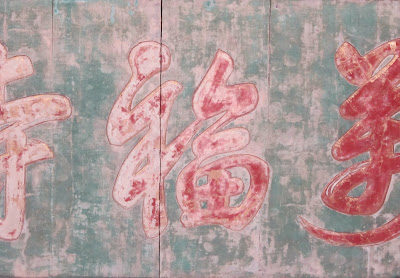Click on this map of the Obaku District. I live about 50 yards from the red "You Are Here" arrow; this is my neighborhood All the grey squares represent temples and shrines in this small district, part of the prefecture of Kyoto. There are approximately 2,000 of these across Kyoto.
I live just a 10 minute walk from the Obaku-san Manpuku-ji Temple built in 1661 by a Chinese monk named Yinyuan Longqi and his disciple Muyan. I'm not trying to be cheeky, but walk out your front door and see if you can find anything from even 1961. This is incredible, even overwhelming. 1661! Around the corner. Yep. The ol' neighborhood temple from SIXTEEN SIXTY ONE.
I like this temple a lot. It is immense. It is grand. It is quiet. It doesn't command respect, but invites it, gently. The grounds are well kept, but have a lovely maturity, like a wise old man or woman. These are not gardens that were planted in the spring; they will not be refreshed before winter. They are there, they've been there, they know.
I like to think that entering Manpuku-ji now, in 2013 is not any different than entering it in 1661, that the purpose of the beautiful architecture and pristine landscape, to inspire tranquility, has not changed.


























